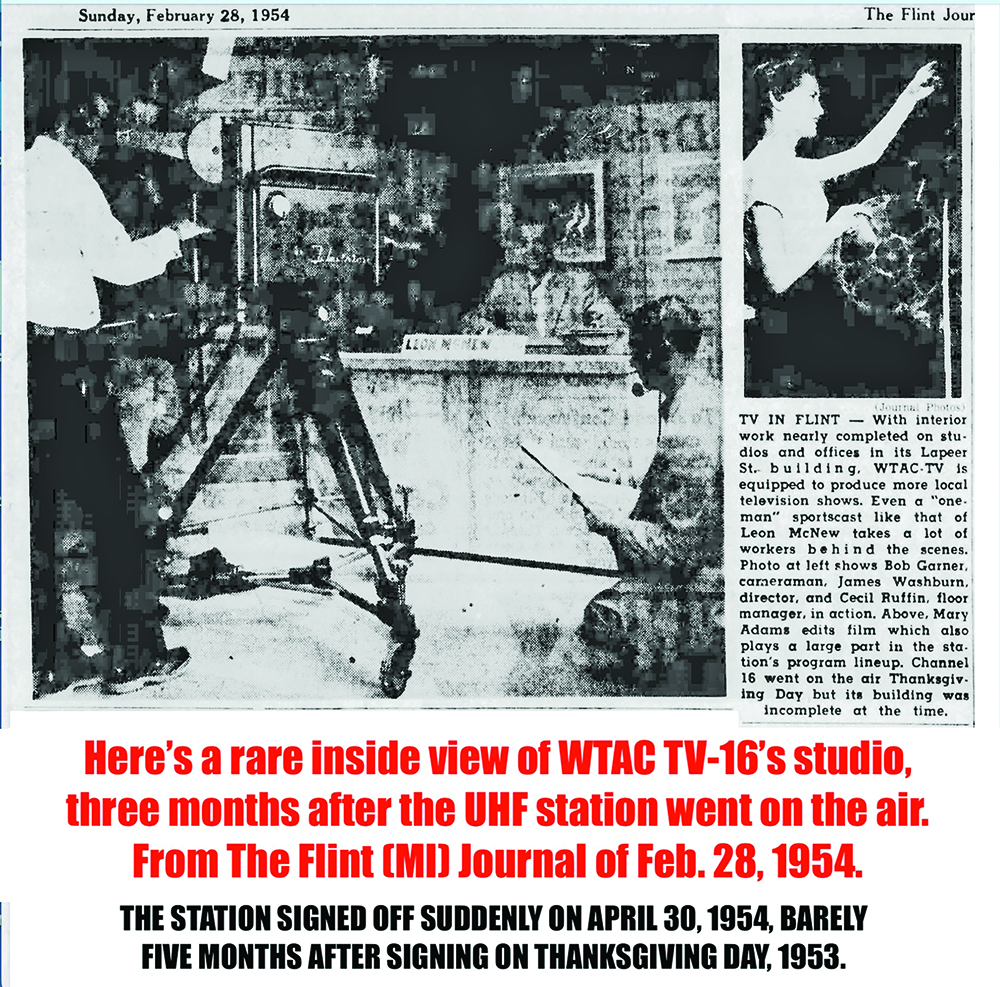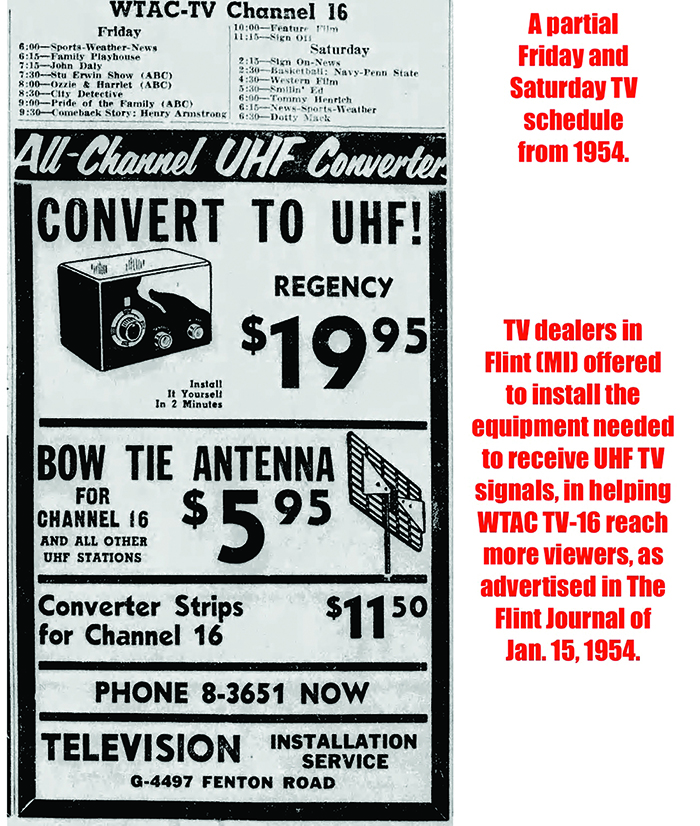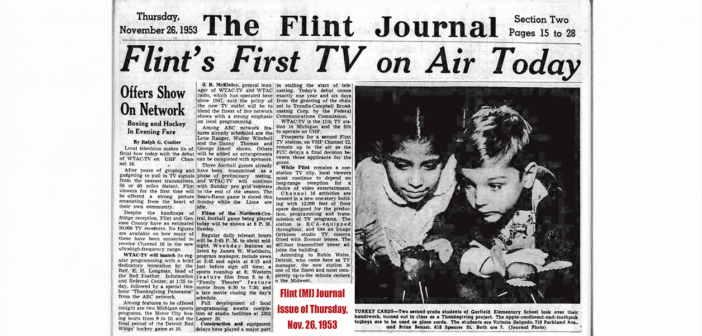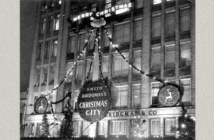There was just one television receiver in Flint in October 1947. It was built by two employees of the Sheldon Radio and Appliance Shop.
It didn’t matter much, because there was only one TV station to watch in all of Michigan at the time.
Detroit’s WWJ-TV had signed on VHF channel 4 as an NBC Network affiliate on June 3, 1947. It was soon joined by Detroit’s WJBK TV-2, offering CBS, and WXYZ TV-7 with the ABC network. Even closer to Flint, Lansing’s WJIM TV-6 sent CBS signals into the area.
“Those Lansing and Detroit black-and-white TV images were weak and often “snowy,” so many residents erected TV antenna towers — some 30 feet tall or more — to bring shows into their living rooms via this new electronic marvel.”

Within the next six years, nearly 60% of Flint homes had purchased television sets — and the growing Flint region was ready to tune in to its own local station.
Finally, WTAC TV-16 signed on the air on Thanksgiving Day, Nov. 26, 1953, as Flint’s first local TV station.
Construction at its 2302 Lapeer Road studios had started in 1952. The new station had a popular radio counterpart, WTAC AM-600, which had served Genesee County since 1947. WTAC-TV featured industry-leading RCA equipment, a full staff, and could present live network programming from ABC, the newest of the three major national networks.

Yet, Flint’s Channel 16 signed off the air less than a year later — on Friday, April 30, 1954.
Its owners, the Trendle-Campbell Broadcasting Corp. of Detroit, cited “nationwide television conditions and circumstances beyond our control” for the closure. They planned to resume telecasting within 60 to 90 days, according to The Flint Journal and FCC files.
While reception was weak, all other TV stations reaching Flint were VHF, which early model TVs could receive more easily than UHF channels.
No other programs were ever broadcast on Channel 16 — despite the massive investment made to build and operate the station.
WTAC-TV broadcast on the UHF band (channels 14–83), while the more popular VHF spectrum occupied channels 2 through 13.
Channel 16’s General Manager, H. Allen Campbell, explained that stronger signals from VHF stations, along with Channel 16 being the only local UHF station, “put the UHF unit at an unfair disadvantage.” Operating a UHF station was also more expensive.
Another challenge: most TV sets sold at the time could only receive VHF channels. UHF required a special adapter, which many retailers excluded to keep prices low.

When the FCC published channel allocations in 1952, Flint was given UHF Channel 16 and VHF Channel 12. Broadcasters didn’t initially understand the long-term limitations of UHF, putting early UHF stations at a distinct disadvantage.
Later, laws changed to require all TVs sold in the U.S. to receive channels 2 through 83. Over time, signal power upgrades allowed UHF stations to reach parity with their VHF counterparts.
But it was too late for WTAC-TV. On August 12, 1954, the owners gave up their Channel 16 dial position, having lost money due to limited audience reach.
WTAC-TV’s Lapeer Road studios sat empty for four years, until 1958, when WJRT TV-12 began broadcasting from the historic building — the first ever built in Flint for television. With many modifications over the years, the building remains the home of Flint’s ABC TV affiliate today.

How WJRT TV-12 struggled to sign on during those four years is another unique and amazing story — to be told later.
Further up I-75 and U.S. 23, Saginaw’s WKNX TV-57 became a rare UHF success story. It was Mid-Michigan’s very first TV station, signing on May 4, 1953. Though it barely survived its first 20 years, the station moved down the dial to UHF Channel 25 in 1965 and changed its call letters to WEYI TV-25. It then built the area’s tallest broadcast tower and increased signal power to better serve the Flint–Saginaw–Bay City market. Today, it’s the area’s NBC affiliate, operating from Clio.
Interestingly, Flint’s very first television broadcast wasn’t over the air — it was an experimental closed-circuit show at the IMA Auditorium in 1939. A small transmitter beamed fuzzy TV signals across the room to a few receiving sets as part of a trade show.
“WTAC-TV didn’t survive, even though it was Flint’s pioneering television broadcaster. And what was at stake? For comparison, when WJRT TV-12 was last sold in 2021, its value was listed at $70 million.”















